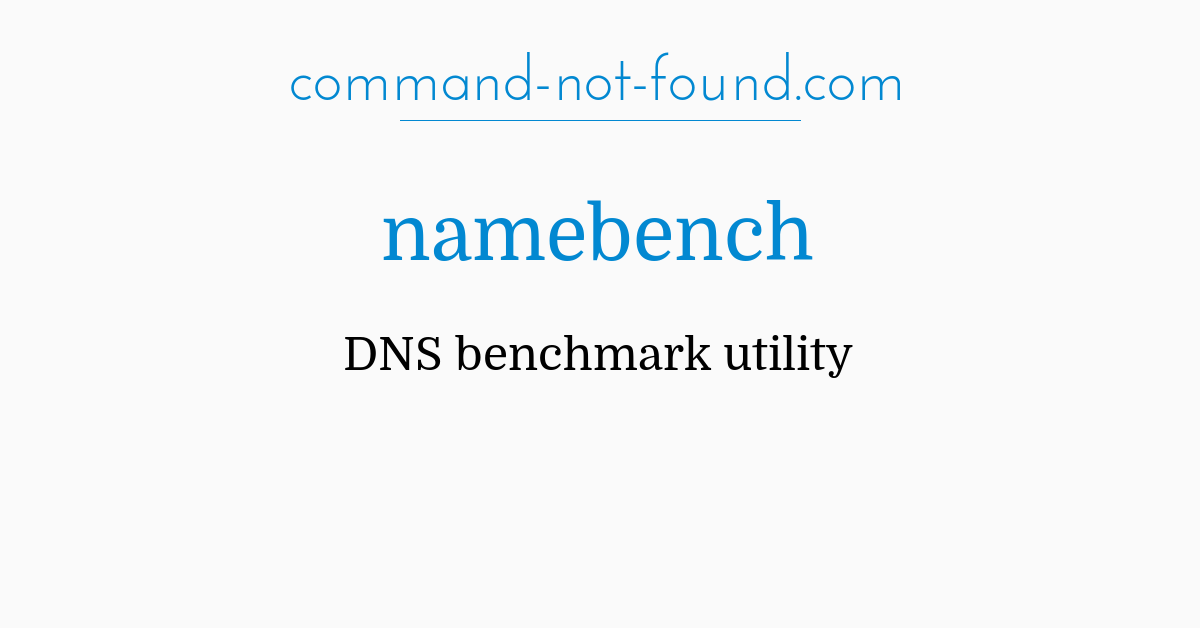

- #CODE GOOGLE COM P NAMEBENCH UPGRADE#
- #CODE GOOGLE COM P NAMEBENCH DOWNLOAD#
- #CODE GOOGLE COM P NAMEBENCH FREE#
- #CODE GOOGLE COM P NAMEBENCH WINDOWS#
For tech folks visiting family, this is one way to share your expertise. The holidays make an excellent time to test alternative DNS settings - both at your small business or at home. If things don’t work as expected, you can always revert back to using your ISP’s DNS settings. Make sure all services that worked before the change also work smoothly after. You also should test commonly used media services, such as web meeting tools or, for home users, music and video streaming services (e.g., iTunes, Netflix, Amazon Prime, and Hulu+).
#CODE GOOGLE COM P NAMEBENCH DOWNLOAD#
Pay particular attention to the “ping time”: a lower ping time combined with consistent download and upload speeds is a good indication that things are working. Run an internet speed test (e.g., ) to check your connection’s performance. The simplest way to do this is to reboot, then connect to the internet.
#CODE GOOGLE COM P NAMEBENCH FREE#
OpenDNS offers reliable free DNS services in addition to paid filtering and security optionsĪfter you’ve made the change, test the results. OpenDNS offers paid versions of the service for home users and businesses. OpenDNS may be configured to warn, or even block, users when certain websites are requested. Change your DNS settings to the IP addresses listed above to route DNS requests to OpenDNS. OpenDNS also protects against spoofing and denial of service attacks, but also extends into the area of web filtering. OpenDNS serves DNS info from at 20 different locations around the world (see the locations and status here: ). Google’s public DNS servers offer an alternative to your ISP’s DNS servers. Google has configured their system to attempt to protect against both spoofing and denial of service attacks. Change your DNS settings to the above settings to route your DNS requests to their servers. Google offers public DNS aimed at providing speed and security. These provide slightly different services. In particular, I suggest you consider both OpenDNS and Google’s DNS servers as viable alternatives. Router settings are typically reached by typing the router’s local IP address (often 192.168.0.1 or 192.168.1.1). In most cases, you’ll want to make the change on the router, so that all connected machines will benefit from the new setting. On most networks, there are two places to change DNS settings: on a router (or system serving as a router), or on the client machine. Namebench tests DNS server response times.

DNS response times typically take milliseconds. Some of these services may provide significantly faster response times than your existing configuration. Namebench returns response times from many well-known DNS services.
#CODE GOOGLE COM P NAMEBENCH WINDOWS#
Google hosts Namebench, “an open-source DNS benchmark utility” that runs on Mac, Windows and Unix systems (see: ). Small businesses or home users typically use the default DNS server of their internet service provider, but other DNS providers are often faster. The decreased wait feels like increased speed. Instead, your router sends requests to a faster DNS server, which means you spend less time waiting for a DNS server to respond. It doesn’t change the bandwidth of your connection.

When you change the DNS setting on your router (or device), you change where your router “looks up” servers on the internet (i.e., DNS translates “ into numerical server addresses). For less-technical folks, think of the DNS as a web-site search service: every time you request a website, your DNS provider translates your request into numbers and routes your computer to the requested site’s servers.
#CODE GOOGLE COM P NAMEBENCH UPGRADE#
Faster ISP: One way to upgrade your connection speed is to call to your internet service provider - or a competitor.Web app users appreciate the difference: a faster connection means faster apps. Akamai’s “State of the Internet” site reports that speeds increased from 4,163 kpbs to 8,675 kbps between 20 (Q2 data). The average internet connection speed in the United States has more than doubled in the past five years.


 0 kommentar(er)
0 kommentar(er)
